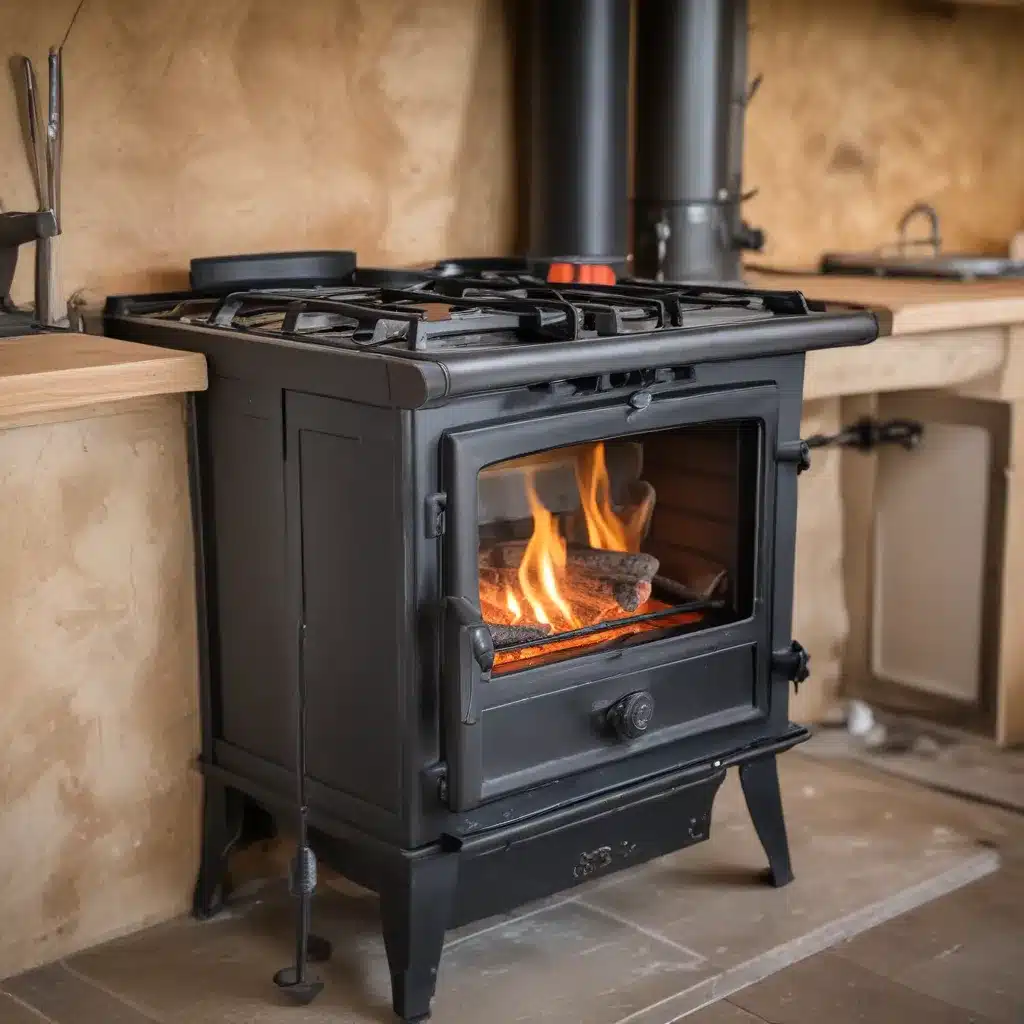
Understanding the Importance of Proper Stove Venting
When it comes to wood stoves, pellet stoves, or gas-powered heating appliances, proper venting is crucial for ensuring safe and efficient operation. Each type of stove has unique venting requirements that must be met to comply with industry standards and local regulations. Failing to adhere to these guidelines can lead to serious safety hazards, such as carbon monoxide buildup, fire risks, or compromised indoor air quality.
Venting Needs for Wood Stoves
Wood stoves require a Class A chimney to safely vent the byproducts of combustion, such as smoke, creosote, and harmful gases. This specialized chimney system features a stainless steel interior and exterior, with insulation or an air channel in between the walls. The vertical venting design helps maintain a consistent draft, allowing the wood stove to operate at peak efficiency.
In addition to the Class A chimney, wood stove installations also benefit from a fresh air intake. This dedicated vent pulls in outside air for combustion, rather than relying on the home’s indoor air. This approach helps preserve oxygen levels, improve efficiency, and prevent negative pressure issues that can compromise the wood stove’s performance.
Venting for Pellet Stoves
Pellet stoves utilize a rigid or flexible vent pipe specifically designed to handle the heat and byproducts of burning wood pellets. While a fresh air intake is not always required, it is highly recommended to enhance the stove’s efficiency and indoor air quality. Pellet stove venting can be routed horizontally through an exterior wall or vertically through the roof, providing more flexibility in installation options.
Direct Venting for Gas Stoves
Gas stoves employ a direct vent system, which is a sealed venting arrangement that draws in outside air for combustion and expels 100% of the exhaust outside the home. This approach ensures optimal energy efficiency and safety, as it completely isolates the combustion process from the indoor living space. Gas stove venting can be installed either vertically through the roof or horizontally through an exterior wall, depending on the specific model and installation requirements.
Ensuring Proper Stove Venting Maintenance
Regardless of the fuel type, proper maintenance of the stove venting system is essential for optimal performance and safety. Regular inspections and cleaning can help identify and address any potential issues, such as blockages, cracks, or deterioration.
Maintaining Wood Stove Chimneys
Wood stove chimneys should be inspected and cleaned annually by a professional chimney sweep. This process involves checking for buildup of creosote, a flammable byproduct of wood combustion, as well as any structural issues that could compromise the chimney’s integrity. Homeowners can also perform basic visual inspections from the rooftop, looking for excess buildup or changes in the chimney’s interior size.
Pellet Stove Venting Upkeep
Pellet stove venting systems should be maintained according to the manufacturer’s recommendations, which are typically outlined in the user’s manual. This often includes regular visual inspections and cleaning to remove any ash or debris accumulation. Homeowners should exercise caution when cleaning the venting, as damage to the exhaust sensing probe can occur if the cleaning process is not done properly.
Maintaining Gas Stove Venting
Even though gas stoves do not produce creosote, it is still essential to inspect the venting system for any damage or potential blockages, such as animal nests. This can be done by removing the exterior vent cap and visually inspecting the venting components. If any issues are identified, it is recommended to contact a qualified service technician to address them.
Navigating Stove Replacement Certification Requirements
When it comes time to replace an existing wood, pellet, or gas stove, homeowners must ensure that the new appliance and its venting system meet all relevant certification requirements. These standards are in place to safeguard the health and safety of occupants, as well as to maintain the efficiency and performance of the heating system.
Certifications for Wood Stove Replacements
Wood stoves must be certified to the Environmental Protection Agency (EPA) standards for particulate emissions. This certification ensures the stove operates cleanly and efficiently, minimizing the release of harmful particulates into the indoor air. Additionally, the stove’s venting system must comply with the requirements of the National Fire Protection Association (NFPA) for proper installation and safety.
Pellet Stove Certification Requirements
Pellet stoves are typically certified to the Underwriters Laboratories (UL) safety standard, which evaluates the stove’s construction, materials, and overall safety performance. The venting system must also be UL-listed and installed according to the manufacturer’s specifications and local building codes.
Compliance for Gas Stove Replacements
Gas stoves must be certified to the American National Standards Institute (ANSI) standards for safety and efficiency. The venting system, including any flexible vent components, must also be ANSI-certified and installed per the manufacturer’s instructions and local regulations.
Regardless of the fuel type, it is essential to work with a qualified, licensed professional when replacing a stove to ensure full compliance with all relevant certifications and safety standards. Cutting corners or attempting DIY installations can compromise the safety and performance of the heating system, potentially putting the homeowner and their family at risk.
Selecting the Right Stove for Your Needs
When it’s time to upgrade or replace an existing stove, homeowners must carefully evaluate their heating needs, available space, and budget to choose the most suitable option. Factors such as energy efficiency, heating capacity, and overall cost of ownership should all be considered.
To assist homeowners in their decision-making process, the Wood Stove Heaters website offers a wealth of information and resources on the latest wood, pellet, and gas stove models, as well as guidance on installation, maintenance, and safety. By understanding the certification requirements and venting needs for each fuel type, homeowners can make an informed choice that aligns with their home heating goals and ensures the long-term safety and performance of their stove.


